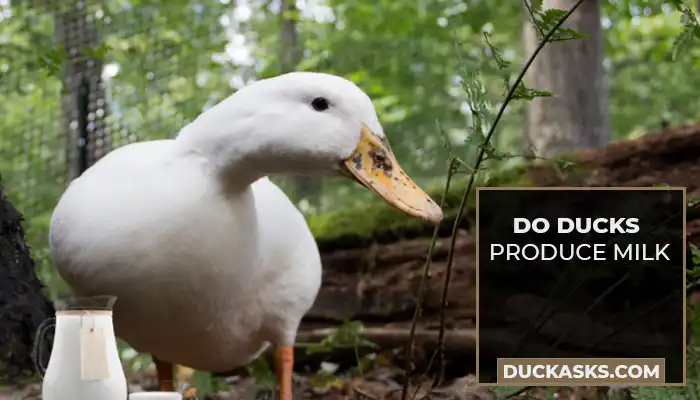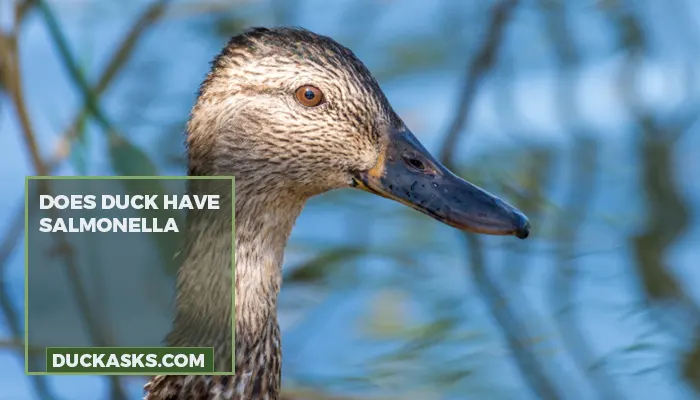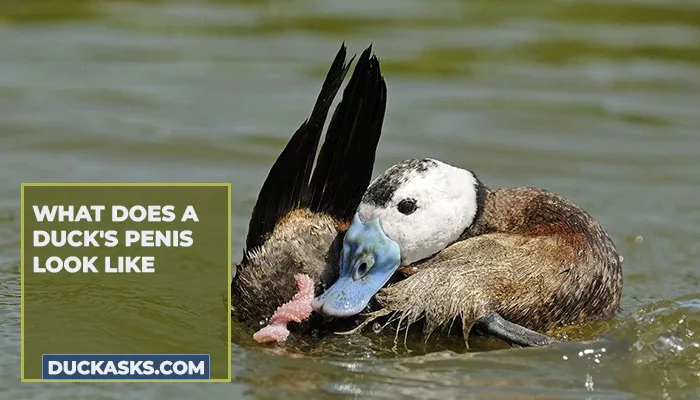What Is Bumblefoot in Ducks?
If the duck is having trouble walking and there’s a scab on its feet, it’s possible your duck has bumblefoot. Now, what is bumblefoot in ducks?
Bumblefoot is an inflammatory condition that affects the feet of ducks. It is caused by the bacteria called Staphylococcus.
If treatment is given at the right time, the issue can be resolved and the duck can live its life without any long-lasting damage. However, if ignored it can be deadly for the duck.
Getting all the info about the disease will help you spot it quickly and make the right decisions at the right time. And we’ve provided all the necessary info you might need right here.
Want to Know More About Duck Blogs:
What Is Bumblefoot?
When the Staphylococcus enters the foot of a duck through an injury or a cut, it can cause Bumblefoot. What usually happens is when the bacteria enters the foot, it causes infection. If the infection isn’t dealt with immediately, it can quickly spread and cause more problems.
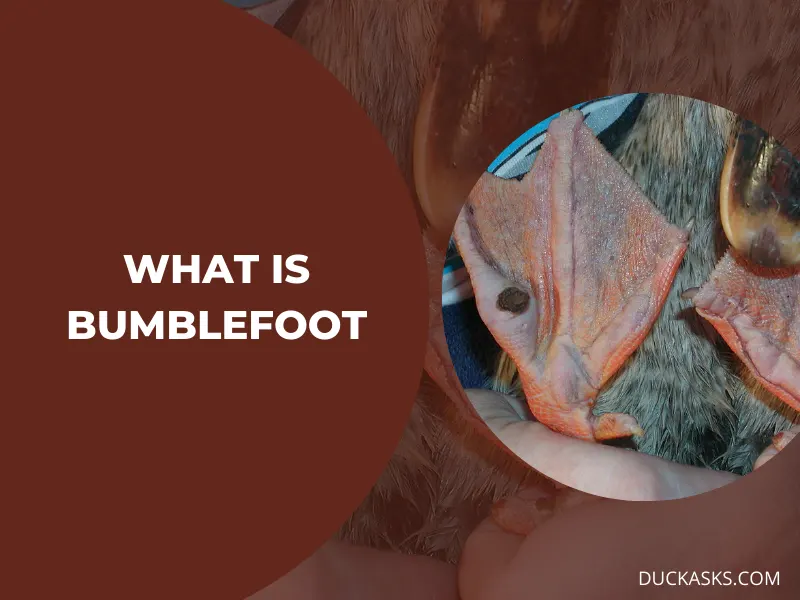
For instance, it can swell the joints in the leg causing arthritis or leading to bone infection as well. Sometimes, it can result in septicemia as well, and that’s the most dangerous outcome. Because then the infection will move through the bloodstream, which can potentially kill the duck.
What Are the Signs of Bumblefoot in Ducks?
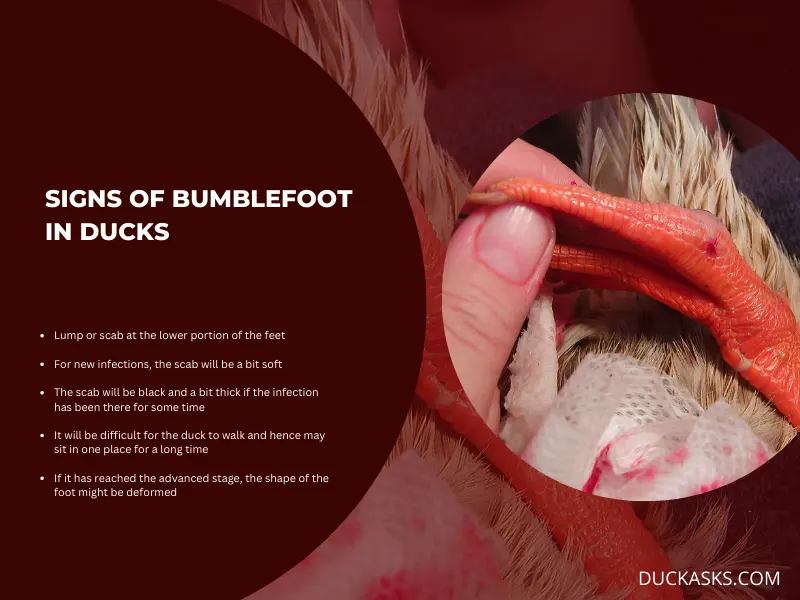
- Lump or scab at the lower portion of the feet.
- For new infections, the scab will be a bit soft.
- The scab will be black and a bit thick if the infection has been there for some time.
- It will be difficult for the duck to walk and hence may sit in one place for a long time.
- If it has reached the advanced stage, the shape of the foot might be deformed.
Is Bumble Foot Contagious? I can assure you that bumblefoot isn’t contagious and certainly doesn’t jump from one duck to another. It is caused by an infection from a cut and can’t spread to others.
So, even if one of the ducks has bumblefoot, the other ducks are safe from this.
How Is Bumblefoot in Ducks Diagnosed?
If you think that your ducks might have bumblefoot, first, you need to examine the feet for symptoms. Check if there is swelling, redness, or scabs on the feet.
If the infection is serious and it has been there for a long, you might see lesions and discoloration.
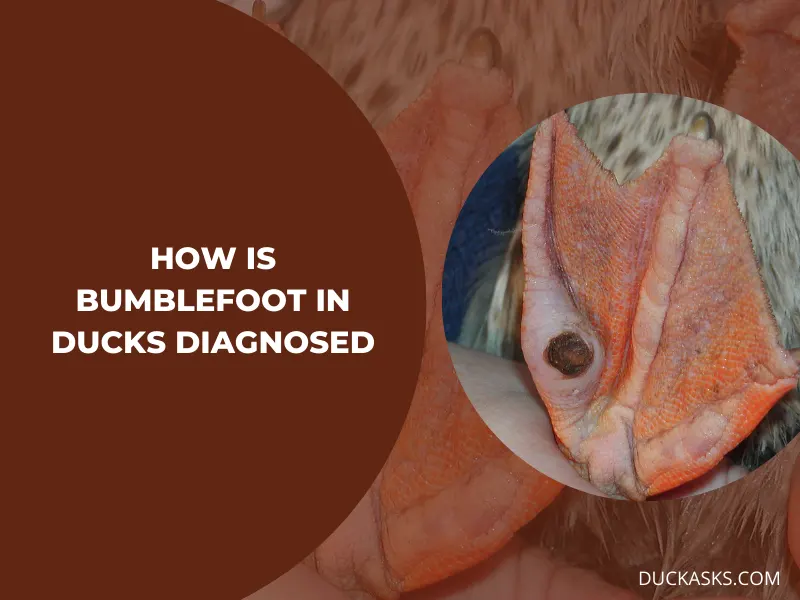
For confirmation, we’ll need X-rays as well. It will show us if there’s any infection or if the bones are damaged. Also, you might need to take swab samples. They will help you to find out the organism that’s causing all the troubles.
To figure out the best treatment method and what antibiotic to take, they might have to take an antibiotic sensitivity test as well. The doctor might also take blood samples to see if other conditions are involved.
Can Bumblefoot Resolve on Its Own? No, it can’t. To recover from the bumblefoot, the ducks need medical care. If you don’t provide the medical care it needs, and leave the duck on its own, then the situation will only get worse and may lead to its death eventually.
What Is the Best Treatment for Bumblefoot in Ducks?
When you’ve confirmed that one of your ducks has caught the infection, you need to find out the severity of the infection. That will help you determine the best course of treatment you should go for.

But before you start treatment, you need to ensure a clean environment for the duck. So, sanitize the feet of the bird and its bedding.
Antibiotics and Surgery
Antibiotics will be needed. You might give him oral antibiotics or antibiotic ointment. They should help control the infection.
You also need to wrap up the feet of the duck to ensure no other pathogens can get in and make the situation even worse. In certain instances, you might need to perform surgery to save the feet and life of the duck.
Throughout the time, you’ll need to continue antibiotics as they will not only reign in the infection but also be important for the duck to get back to its previous state.
To help it deal with the pain, you may give it some pain and anti-inflammatory medication as well.
Tips to Help Them Recover
- Give the duck the required nutrition, best to follow the vet’s given diet.
- Check if there’s any bleeding regularly, in that case, you need to clean the feet and change the bandage.
- Keep the bird’s cage clean.
- Keep an eye on the duck to see if it’s suffering from any pain and whether it needs additional medication.
What Are the Long-Term Effects of Bumblefoot on Ducks?
With proper medical care in time, it’s likely that the duck will recover from the disease soon enough and there will be no long-term effects. And if certain precautions are taken, then the duck will live a bumblefoot-free life.
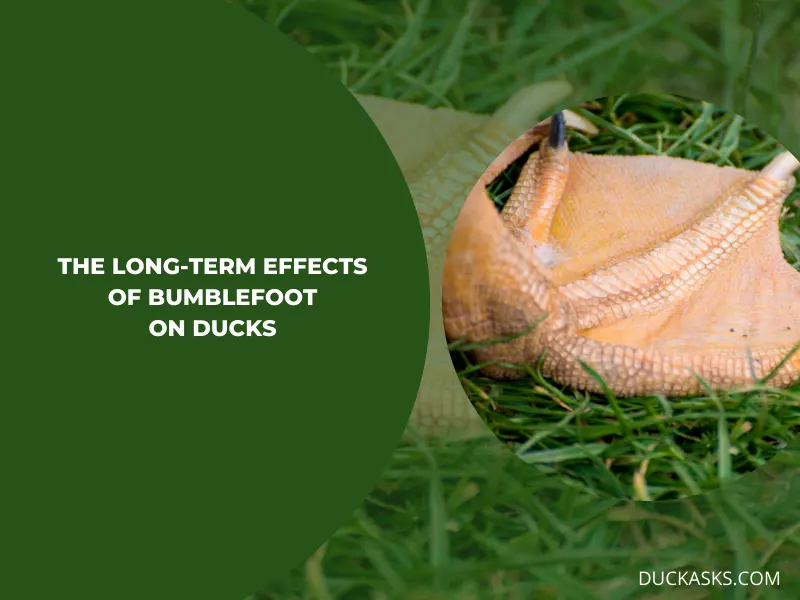
However, if medical care isn’t provided in due time, the duck may develop serious diseases like bone infection and septicemia.
What Happens If Bumblefoot Goes Untreated?
If left untreated, it can cause immense suffering for the duck. The infection will slowly spread to the bones causing swelling and intense pain.
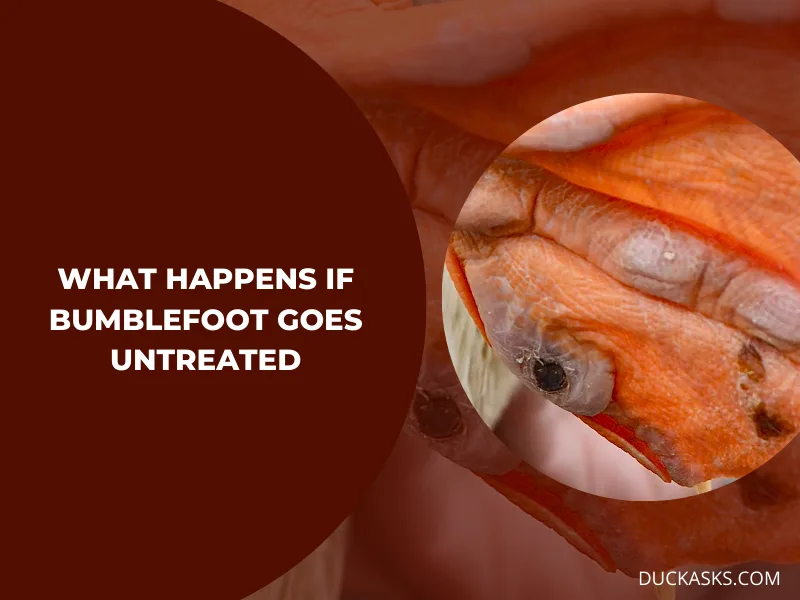
Also, they will be unable to walk due to the pain and deformed feet. And even if they’re treated later, the scarring will remain and walking will remain an uncomfortable experience for them forever.
Also, if the infection travels through the bloodstream, it can be deadly for the duck.
How to Prevent Bumblefoot?
Since it happens due to accidents mainly, you need to take measures that prevent such scenarios. Here are some tips for you:

Remove Sharp Items from the Ducks Roaming Zone
Where the ducks are kept, make sure to remove all the sharp objects that can cause an accident. The lower the risk of getting an accidental cut, the lower the chances of the duck getting the bumblefoot.
Do Regular Inspections of Feet
Check the feet of ducks at least once every 2 weeks. That way, even if they catch bumble foot, you can find it early and give them the required treatment as soon as possible.
Conclusion
Bumblefoot is a dangerous issue and can’t be taken lightly. If you don’t act quickly, the duck will suffer and may die from it as well.
So, it’s up to you to spot the symptoms quickly and give the duck the treatment it needs. To learn more about the care of ducks, connect with us on Twitter and Facebook.
Images Credit:
- Youtube.com/@GoldShawFarm
- Canva.com/photos
- Flickr.com
References
- https://blog.mcmurrayhatchery.com/2022/04/26/gail-damerow-discusses-bumblefoot-in-chickens-and-ducks
- https://wagwalking.com/bird/condition/bumblefoot

